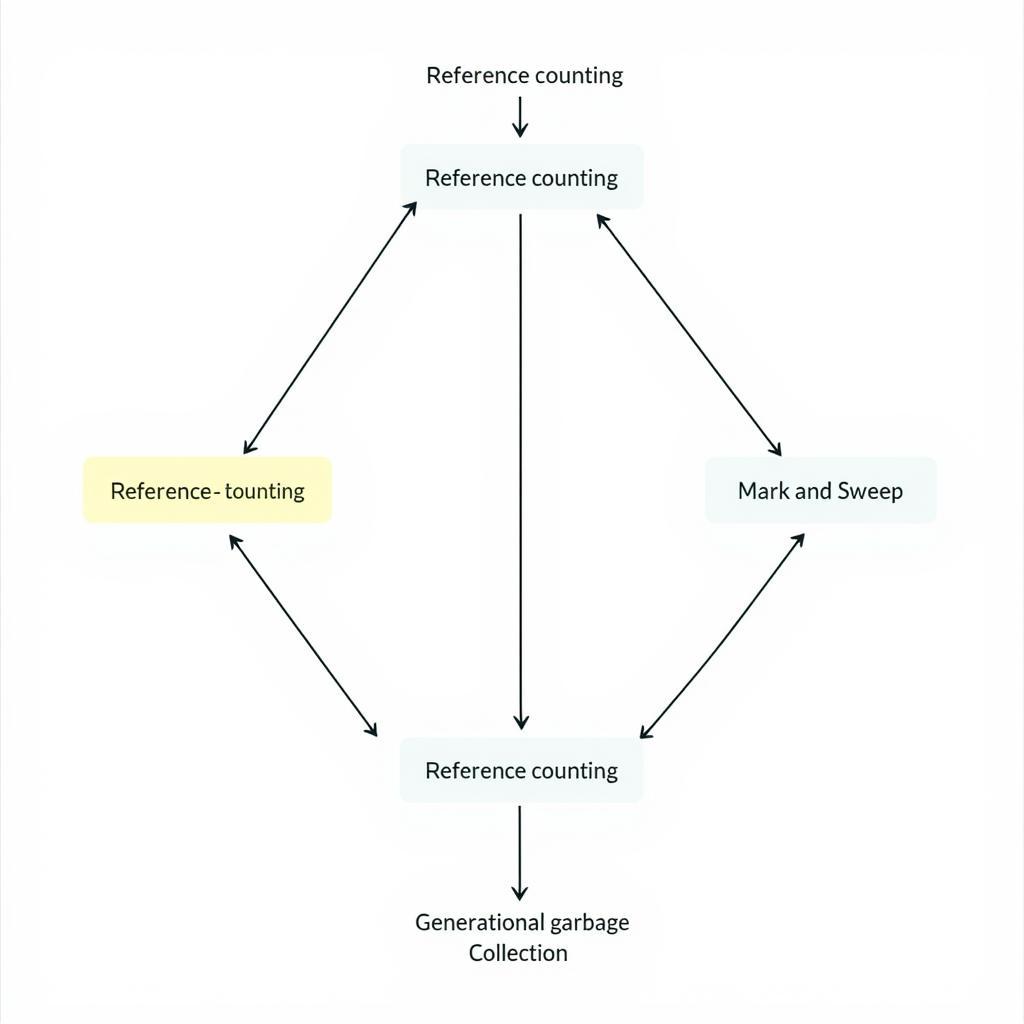Mastering the Art of Automatic Memory Management
The Art Of Automatic Memory Management is crucial for modern software development. It frees developers from the tedious and error-prone task of manually allocating and deallocating memory, allowing them to focus on building robust and efficient applications. This article dives deep into the intricacies of automatic memory management, exploring its benefits, various implementation techniques, and best practices.
Understanding Automatic Memory Management
Automatic memory management, often referred to as garbage collection, is a process where the system automatically reclaims memory that is no longer being used by a program. This eliminates the need for developers to explicitly free memory, reducing the risk of memory leaks and dangling pointers, which are common sources of bugs and crashes. By automating this process, developers can write more reliable and maintainable code.
How Does Automatic Memory Management Work?
Automatic memory management typically involves a garbage collector, a specialized program that runs periodically to identify and reclaim unused memory. The garbage collector uses various algorithms to track which memory blocks are still accessible by the program and which are no longer in use. Once identified, the unused memory blocks are reclaimed and made available for future allocations.
Benefits of Automatic Memory Management
- Reduced Memory Leaks: Automatic memory management significantly reduces the likelihood of memory leaks by automatically reclaiming unused memory.
- Improved Developer Productivity: By automating memory management, developers can focus on writing application logic rather than managing memory.
- Enhanced Code Safety: Eliminating manual memory management reduces the risk of errors like dangling pointers and double frees, leading to safer and more stable applications.
- Simplified Development Process: Garbage collection simplifies the development process, especially in complex applications with intricate memory allocation patterns.
Techniques for Automatic Memory Management
Several techniques are employed for automatic memory management, each with its strengths and weaknesses. Some popular methods include:
- Reference Counting: Keeps track of how many references point to a particular memory block. When the count drops to zero, the memory is reclaimed.
- Mark and Sweep: Traces all reachable objects from a set of root objects. Any objects not marked as reachable are considered garbage and are swept away.
- Generational Garbage Collection: Divides the heap into generations based on object age. Younger generations are collected more frequently than older generations.
Choosing the Right Technique
The choice of garbage collection technique depends on the specific requirements of the application. Factors to consider include performance overhead, memory usage, and the characteristics of the application’s memory allocation patterns.
 Different Garbage Collection Techniques
Different Garbage Collection Techniques
Best Practices for Automatic Memory Management
While automatic memory management simplifies memory handling, developers still need to follow best practices to ensure optimal performance and avoid potential pitfalls:
- Avoid Circular References: In languages with reference counting, circular references can prevent objects from being garbage collected even when they are no longer in use.
- Minimize Object Creation: Creating too many objects can put pressure on the garbage collector and impact performance. Reuse objects whenever possible.
- Understand Your Garbage Collector: Familiarize yourself with the specific garbage collection algorithm used by your programming language or runtime environment.
What are the common challenges with automatic memory management?
While automatic memory management offers significant advantages, it also presents some challenges:
- Performance Overhead: The garbage collector consumes resources and can introduce pauses in program execution.
- Non-Deterministic Behavior: Garbage collection can occur at unpredictable times, making it difficult to precisely control memory usage.
Conclusion
The art of automatic memory management is a powerful tool that simplifies software development and enhances code reliability. By understanding its principles, various techniques, and best practices, developers can leverage its benefits to build robust and efficient applications. Mastering the art of automatic memory management is essential for any modern software developer.
FAQ
- What is the primary advantage of automatic memory management? Reduced memory leaks and improved developer productivity.
- What are the common garbage collection techniques? Reference counting, mark and sweep, and generational garbage collection.
- How can I avoid circular references? Design your data structures carefully and break cycles when objects are no longer needed.
- What factors influence the choice of garbage collection technique? Performance overhead, memory usage, and application characteristics.
- How can I optimize my application for automatic memory management? Minimize object creation, reuse objects, and understand your garbage collector.
- Does automatic memory management eliminate all memory issues? While it significantly reduces memory-related problems, certain issues can still arise if not handled properly.
- What are the drawbacks of automatic memory management? Performance overhead and non-deterministic behavior can be potential drawbacks.
Need support? Contact us at Phone: 02462573573, Email: [email protected] Or visit us at: Savico Megamall, 7-9 Đ. Nguyễn Văn Linh, Gia Thụy, Long Biên, Hà Nội 10000, Việt Nam. We have a 24/7 customer support team.


